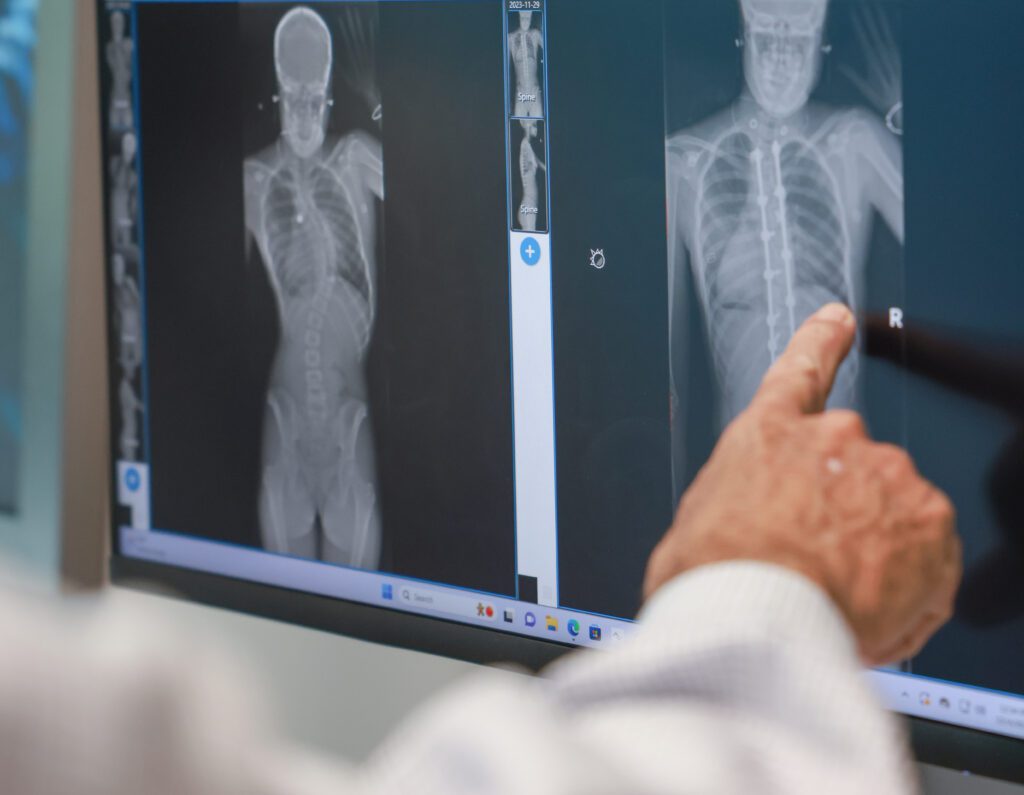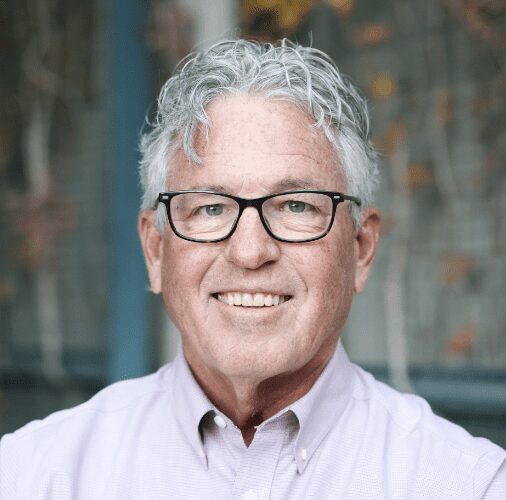At Pediatric Orthopedic Specialists, we are deeply committed to addressing the unique challenges of Pediatric Scoliosis & Spine Deformity. Our specialized team, fortified by years of experience and expertise, is focused on delivering exceptional care tailored to the specific needs of young patients facing these complex spinal conditions.

Guided by a philosophy that combines cutting-edge medical treatment with a compassionate touch, our clinic stands as a beacon of hope and reassurance for families navigating the intricacies of scoliosis and spinal deformities.
Our goal is to empower families with knowledge and support, ensuring that every child under our care receives the best possible outcome for a healthy and active future.
What is Scoliosis?
Scoliosis is a condition where the spine, when viewed from behind, bends to form an “S” or “C” shape rather than appearing straight. This curvature can occur to the right, left, or both sides and can affect both the middle (thoracic) and lower (lumbar) areas of the spine. The vertebrae may also be rotated. Scoliosis is diagnosed when the spine’s curvature is 10 degrees or more, though it often becomes noticeable only when the curve exceeds 20 degrees.
Mild Cases of Scoliosis
Causes of Scoliosis
- Adolescent scoliosis, which affects children between 10 and 18 years old, is most common. This form, called idiopathic scoliosis, often has no known cause.
- Other causes, when identifiable, may include birth defects, injuries, infections, abnormal growth, or diseases such as multiple sclerosis, metabolic diseases, rheumatoid disease, or neuromuscular diseases.
Symptoms of Scoliosis
Diagnosis and Treatment
- Diagnosis: X-rays are the primary tool for diagnosing scoliosis, showing the degree of spinal curvature. MRI or CT scans may be used for more complex cases.
- Treatment: Our approach aims to prevent further curvature and deformity. Treatment options include observation and regular exams for mild cases, bracing for moderate curves, and surgery for severe cases (curves over 45 degrees).
Alternative Scoliosis Therapies
Areas of Expertise
- Adolescent Idiopathic Scoliosis
- Scheuermann’s Kyphosis
- Early Onset Scoliosis
- Congenital Scoliosis/Kyphosis
- Neuromuscular Scoliosis
- Syndromic Scoliosis
- Spondylolisthesis
- Spine Tumors/Infection
- Disk Herniations
- Spinal Trauma

In treating spine deformities, I understand the profound relief and joy that parents and children feel after a successful surgery. It’s deeply fulfilling to see the worry in a parent’s eyes replaced with hope, and a child’s limitations give way to new possibilities. My commitment is to guide each family through this journey with compassion and expertise, ensuring a brighter future for our young patients.
- Dr. John Smith, Pediatric Orthopedic Surgeon
FAQ’s
What are the different types of scoliosis?
There are three primary types of scoliosis: idiopathic, congenital, and neuromuscular. Idiopathic scoliosis, the most common type, has no known cause. Congenital scoliosis occurs due to spinal development issues in the womb, often involving abnormal vertebrae development. Neuromuscular scoliosis can result from conditions affecting nerves and muscles, such as cerebral palsy or muscular dystrophy, leading to spine misalignment.
Can scoliosis be prevented?
Currently, there is no known method to prevent scoliosis, as it often develops due to genetic factors. Most cases of idiopathic scoliosis, the most common form, arise without a fully understood cause. It is a misconception that scoliosis can be prevented through posture correction or avoiding activities like carrying heavy backpacks.
What causes scoliosis?
The majority of scoliosis cases, approximately 80 to 85%, are idiopathic, meaning their causes are unknown. The remaining cases may be linked to congenital abnormalities, genetic conditions, neurological disorders, or muscular diseases. It’s important to dispel myths that scoliosis is caused by factors like poor posture or carrying heavy items.
What are common symptoms of scoliosis?
Common symptoms of idiopathic or congenital scoliosis include tilted or uneven shoulders, a protruding shoulder blade, one side of the ribs being more prominent, an uneven waistline, one hip being higher than the other, and a leaning posture. These physical manifestations can often be the first indicators of scoliosis in children.
How is scoliosis treated?
The treatment for scoliosis is determined by the severity of the curve and the patient’s age. Bracing is often recommended for less severe curvatures to prevent worsening, particularly in growing children. For curves greater than 50 degrees, surgery, such as spinal fusion, may be considered. This surgical approach has shown high success rates in preventing further curvature and straightening the spine. Each treatment plan is personalized, taking into account the specific needs and conditions of the child

